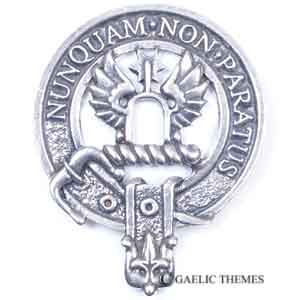Search
Johnstone
Select
- Clan Motto: Nunquam non paratus (Never Unprepared)
- Notes: Crest: A winged spur, Or. Johnstone is a patronymic name which extends into antiquity. The Johnstones were once the single most powerful clan on the Borders. Settled first in Annandale, their possessions eventually covered much of the western marches. Here they kept watch against English freebooters and “sought the beves that made their broth” by reiving English herds. The first record of a Johnstone is John, whose son Gilbert appears in records dated to around 1194. Sir John Johnston, knight of the county of Dumfries, is listed on the Ragman Rolls - the record of nobles who swore fealty to Edward I of England in 1296. His great grandson served as a warden of the western marches in 1381. Adam Johnstone was Laird of Johnstone before 1413 fought on the Scottish side in the battle of Sark, 1448. When the Douglas clan rebelled against King James II, Adam’s son was a key player in suppressing the revolt. He was rewarded with a grant to the lands of Buittle and Sannoch near Threave Castle in Galloway (formerly Douglas lands). In the late sixteenth century, the Johnstones found themselves in a bitter feud against the Maxwells. Lord Maxwell and many of his men were killed at the battle of Dryfe Sands near Lockerbie in 1593. In 1608 at a meeting to resolve their differences, the ninth Lord Maxwell murdered Johnstone. He was hanged for this crime in 1614. In 1701 William, third Earl of Hartfell and second Earl of Annandale was raised to the rank of Marquess of Annandale. However, after him the family fortunes slowly declined. In 1792 the family titles became dormant. In 1971, the process of revival began with the implementation of an old 1662 charter which allowed title descent through the female line. The Annandale families were recognized once more as chiefs of the Johnstone clan. In 1982, Lord Lyon recognized Major Percy Johnstone of Annandale as baron of the lands of the earldom of Annandale. The line has been secure since.
Product Name
Price Starts At
$59.99
$34.99
$219.99
Product Name
Price Starts At
$39.99
$129.99
